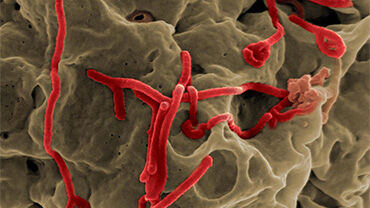Epidemiological update: Ebola virus outbreak in Uganda, 8 August 2012Archived
On 24 July 2012, the Ministry of Health of Uganda reported an outbreak of Ebola hemorrhagic fever from Kibaale district, Midwestern Uganda. As of 7 August 2012, 60 suspected cases, including 16 deaths, have been reported in Uganda. This epidemiological update complements the assessment of the risk published by ECDC on 2 August.
On 24 July 2012, the Ministry of Health of Uganda reported an outbreak of Ebola hemorrhagic fever from Kibaale district, Midwestern Uganda. This epidemiological update complements the assessment of the risk published by ECDC on 2 August.
As of 7 August 2012, 60 suspected cases, including 16 deaths, have been reported (See WHO updates on Ebola outbreak in Uganda). Ten cases have been laboratory confirmed as Ebola Sudan virus subtype by the Uganda Virus Research Institute (UVRI), Entebbe, Uganda (See WHO Regional Office of Africa). Six of these confirmed cases were acute cases and four were convalescent cases.
One case was confirmed in the capital city of Kampala. This case was a healthcare worker from the Kibaale district, who was treated in the Mulago hospital in Kampala and who subsequently died.
There are currently 36 cases admitted in the isolation facility in Kagadi Hospital, of whom 29 are in a convalescent ward and soon to be discharged.
Of the 398 contacts identified, 84 have completed their monitoring period of 21 days and 292 are still under active follow-up. So far, all samples from other districts have tested negative for Ebola virus (including two suspected cases in Kenya). None of the seven health workers from Kampala referral hospital who attended to a fatal case has developed symptoms of the disease by day 16 of follow-up. This indicates that there has been no expansion of the outbreak beyond Kibaale District.
The Ugandan Ministry of Health has activated a National Task Force and is actively working with the World Health Organization, the US Centre for Disease Prevention and Control, Doctors Without Borders (Médecin Sans Frontières) and the Red Cross to support the response operations. The neighbouring districts have been put on high alert and are enhancing surveillance of cases (See WHO Regional Office of Africa).
Likewise, neighbouring countries, Kenya, Tanzania, Sudan and Rwanda, have strengthened their surveillance to detect and respond to the emergence of cases of Ebola haemorrhagic fever. On 5 August 2012, local media report two suspected cases in the Kagera region of Tanzania (bordering Uganda). The cases are unrelated to each other. Both crossed the Ugandan-Tanzanian border but have no apparent epidemiological links to the Kibaale District.
It is likely that more cases will be identified in the coming weeks, as active case-finding and contact monitoring is in place, and given the duration of the incubation period of up to three weeks. As of 8 August, the update on the epidemiological information does not change the conclusion of the risk assessment published by ECDC on 2 August.
On 24 July 2012, the Ministry of Health of Uganda reported an outbreak of Ebola hemorrhagic fever from Kibaale district, Midwestern Uganda.
Related content
Infographics about Ebola virus disease
How does Ebola spread? Ebola - reducing the risk of transmission. View ECDC infographics
Factsheet about Ebola disease
Ebola virus disease is rare, but has the potential to cause high death rates.





